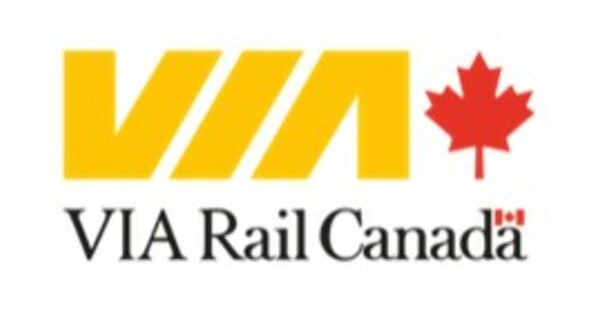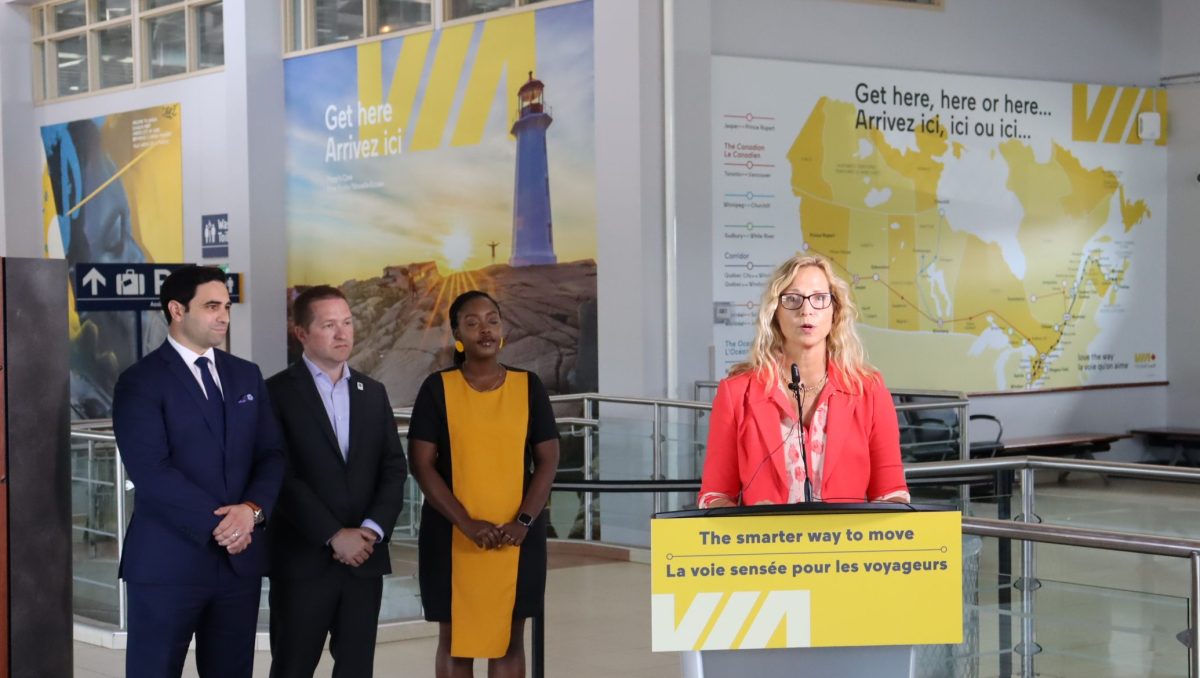1. Where and when was this investment made by the federal government?
The Maintenance Facilities upgrade program is part of the Corridor fleet replacement program. The Federal government allocated funds for the Fleet replacement program in its 2018 budget.
2. Explain the phases of the fleet replacement program.
The maintenance facilities upgrades are part of a larger five-phase program aiming to improve VIA Rail’s service in the Corridor.
The first phase is the purchase of 32 bi-directional trains for the Corridor fleet.
The second phase consists of modernizing maintenance processes for consist-based maintenance and adapting our maintenance centres to allow them to maintain the new trains.
In the third phase, we will integrate the systems and equipment and build the interface between the 32 trains, allowing various VIA Rail departments to coordinate, monitor, report, communicate and support VIA Rail services.
The fourth phase is the project management phase and exists to ensure the other phases of the project are delivered.
The fifth and final phase of the program is Maintenance facilities upgrades: The Toronto Maintenance Facility and Montreal Maintenance Facility will be upgraded with new infrastructure and facilities to enable efficient maintenance and service of the new fleet.
3. What is the scope of work and budget for the Toronto Maintenance Centre?
The project to modernize the maintenance centres in Montréal and Toronto is part of the Corridor fleet replacement program, for which funds were allocated in the Federal government’s 2018 budget. Part of the $1.5B overall budget for the New fleet is being invested in the modernization of VIA Rail’s maintenance centres, the implementation and integration of various IT systems as well as the transformation of maintenance processes.
The
Toronto Maintenance Centre (TMC) project includes the demolition of a portion of the existing structure of Building C, construction of a new addition, removal, and replacement of tracks, as well as the addition of a stand-alone Wheel Lathe Facility, and critical infrastructure improvements throughout the maintenance yard.
The TMC project scope highlights include:
- Partial demolition of the existing main building;
- Modification to the existing main building;
- New maintenance building addition;
- New Wheel Lathe building (to maintain wheels and ensure smooth operation on the tracks);
- Infrastructure and Trackside Service Building (TSB) for Vehicle Equipment Measurement Systems (VEMS);
- Fuelling upgrades;
- Stabling upgrades; and
- State of Good Repair Work (SOGR).
4. The first trains in the New Fleet are going into commercial service in 2023, will there be issues with their maintenance as construction is ongoing?
VIA Rail implemented a detailed transition strategy (
adapting the existing facilities) to ensure the new fleet can be maintained safely and effectively through the progress of the construction
.
5. As you break ground in Toronto, will there be any impacts on the communities closest to the facility?
Reduced environmental impact for our communities has always been a core priority for the Corridor Fleet Replacement Program.
The city of Toronto, the general population and the stakeholders for the Toronto site have been informed. We have set up communication channels to keep the public regularly updated throughout the process.
To further reduce the impact on the Toronto community, dust, air, noise, and vibration monitoring systems will be set up around the site’s perimeter. These systems will follow provincial guidelines.
Any complaints received regarding nuisance effects (air, noise, vibration) will be investigated promptly and the cause of the complaint will be controlled to ensure no further impacts occur.
6. Have you evaluated the environmental risks (i.e.: contaminated soil) on the construction sites?
VIA has completed a geotechnical survey including soil analysis to determine the extent of contaminated soil, hazardous waste, and presence of biogas. The contractor will monitor any spills, as well as all of the shipping of any excavated soils to ensure they are properly handled and disposed at registered receiving sites.
7. Will maintenance of the new fleet be conducted at both maintenance centres?
The vision for VIA’s modernization plan has always included both Toronto and Montréal’s maintenance centres and its employees as key players in keeping our new fleet running reliably for Canadians.
During construction, both centres will be active in performing maintenance on our trains. As the new fleet arrives in stages, we will be training our staff to adapt to the new trains, using state-of-the-art simulation technology to ensure the longevity of our new fleet.
8. Will VIA’s modernization process create more jobs? If so, how many and where?
In this next step of becoming a more modern passenger rail service, VIA is proud to be contributing to Canada’s sustainable recovery. This project in Toronto will create up to 475 local construction and trade jobs from now to 2026.
9. Beyond removing some cars from the road, how does this project contribute to environmental sustainability?
Before the pandemic, VIA moved millions of passengers from coast to coast to coast and got millions of cars off our roads, which is significant in reducing greenhouse gases.
As well as the positive impact our trains creates for the environment, our new maintenance facilities will both be LEED certified, signifying the facilities’ benchmark for green design and sustainability.
Finally, in 2019 VIA Rail received a grant from environment Canada to remove the containers at the TMC site. VIA Rail is actively working to clean up both sites and has registered the TMC and MMC with the Environment Canada (ECCC) Federal Contaminated Sites Action Plan (FCSAP) to work towards removing contamination that is found during excavation activities to remediate the sites. The soil contamination is a result of decades of use as a train yard and the accumulation of contamination from related industrial activities, as well as contamination that was previously present on the sites prior to VIA Rail’s occupation.
10. How were contracts awarded for these jobs? Are there any known subcontractors at this point?
VIA Rail conducted a fair, open and transparent procurement process. A market-sounding exercise was conducted in December 2019 with general contractors interested in the project. A request for qualifications (RFQ) was issued in January 2020, and a request for proposals (RFP) was conducted and released to a shortlist of qualified proponents. Selecting our partners was based on relevant experience, technical compliance, delivery capacity, and price. We followed the most rigorous governance practices and had a Fairness Monitor oversee the process to ensure it was open and transparent.
media.viarail.ca


www.newswire.ca


www.transportaction.ca




